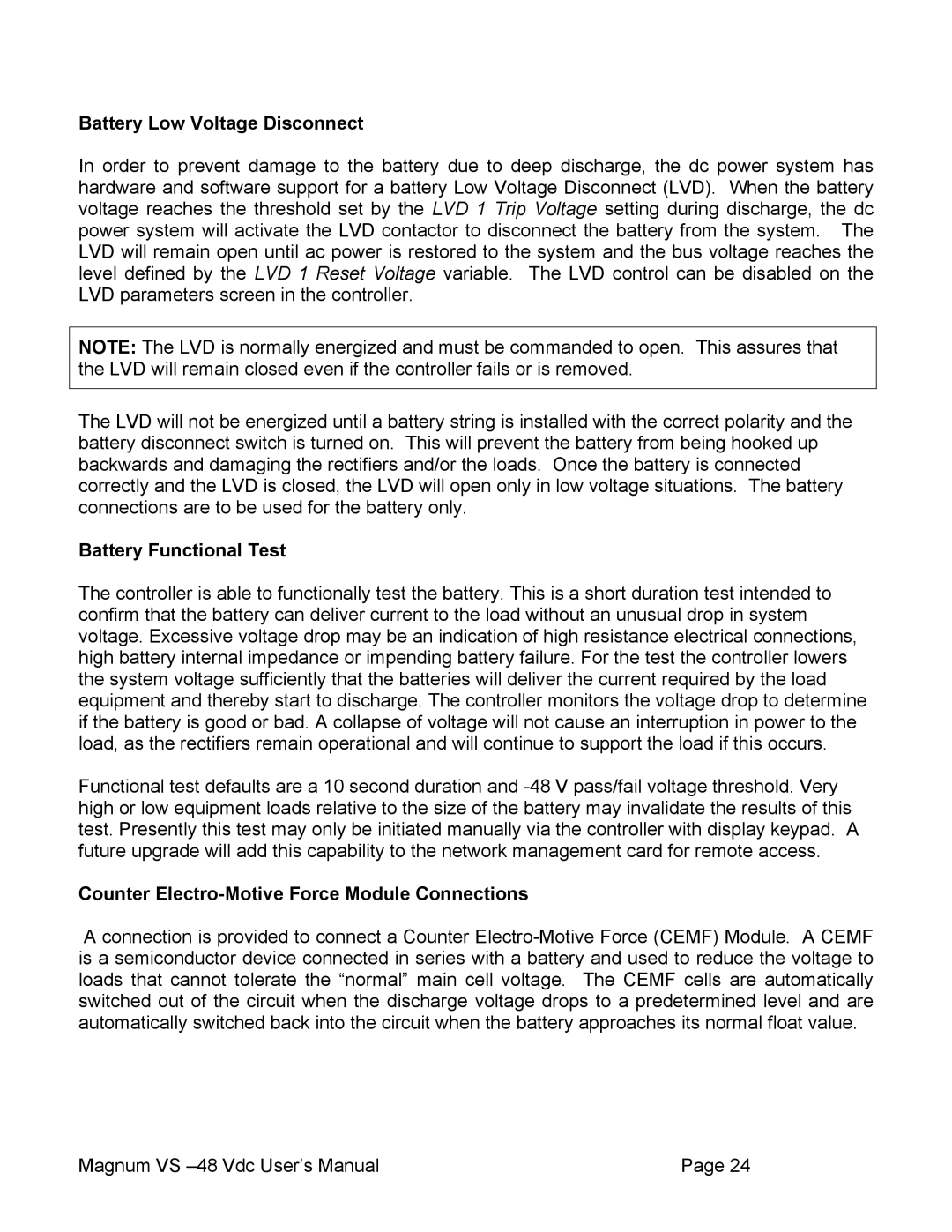
Battery Low Voltage Disconnect
In order to prevent damage to the battery due to deep discharge, the dc power system has hardware and software support for a battery Low Voltage Disconnect (LVD). When the battery voltage reaches the threshold set by the LVD 1 Trip Voltage setting during discharge, the dc power system will activate the LVD contactor to disconnect the battery from the system. The LVD will remain open until ac power is restored to the system and the bus voltage reaches the level defined by the LVD 1 Reset Voltage variable. The LVD control can be disabled on the LVD parameters screen in the controller.
NOTE: The LVD is normally energized and must be commanded to open. This assures that the LVD will remain closed even if the controller fails or is removed.
The LVD will not be energized until a battery string is installed with the correct polarity and the battery disconnect switch is turned on. This will prevent the battery from being hooked up backwards and damaging the rectifiers and/or the loads. Once the battery is connected correctly and the LVD is closed, the LVD will open only in low voltage situations. The battery connections are to be used for the battery only.
Battery Functional Test
The controller is able to functionally test the battery. This is a short duration test intended to confirm that the battery can deliver current to the load without an unusual drop in system voltage. Excessive voltage drop may be an indication of high resistance electrical connections, high battery internal impedance or impending battery failure. For the test the controller lowers the system voltage sufficiently that the batteries will deliver the current required by the load equipment and thereby start to discharge. The controller monitors the voltage drop to determine if the battery is good or bad. A collapse of voltage will not cause an interruption in power to the load, as the rectifiers remain operational and will continue to support the load if this occurs.
Functional test defaults are a 10 second duration and
Counter Electro-Motive Force Module Connections
A connection is provided to connect a Counter
Magnum VS | Page 24 |
